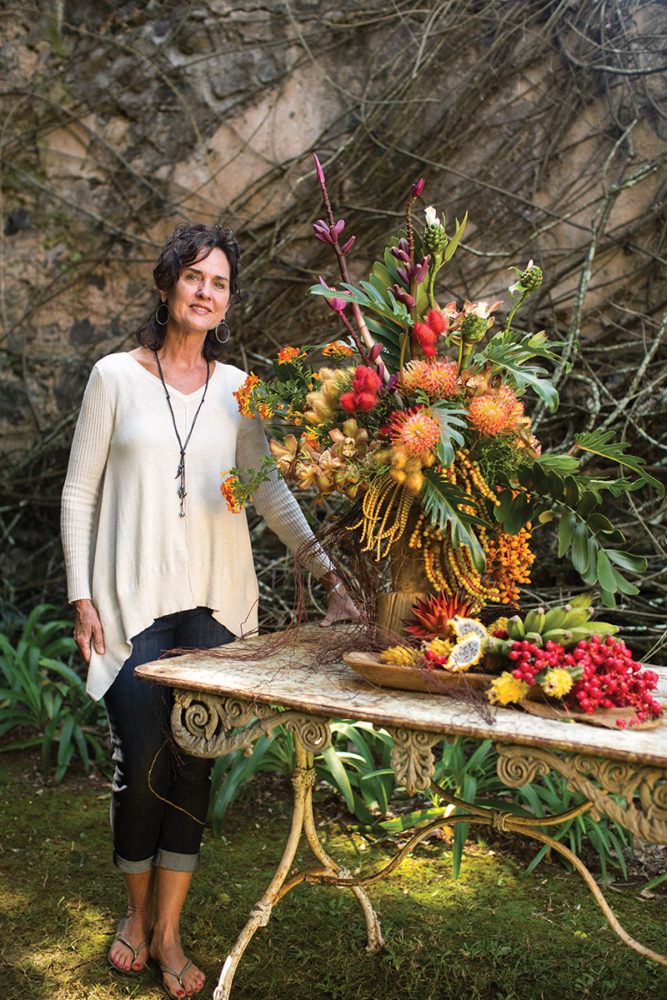
My inspiration for this design came from the natural beauty of Hawaiian flora. Even the container I chose has a simple wooden shape and texture reminding me of a pahu (ancient Hawaiian word for drum). Living in upcountry Maui is like living in a garden, and I create arrangements to look like they’re growing in nature. When gathering these materials, I took notice of the lines and curves of each one so that I could later replicate them in the centerpiece. Though Maui’s an obvious place for tropical, exotic flora, you may start to see similar shapes and colors in the fruit, flowers, and plants you find along the road or in your local grocery stores.
When in Maui
Floral designer Teresa Sena, a Maui transplant from the Pacific Northwest, has lived in this part of paradise for 36 years and counting. Maui is her favorite Hawaiian island, “hands down,” she says. “The reason being the diversity—there are so many little microcosms of people, culture, and environments.” Here she takes us along to some of her favorites on the island.
GARDEN: My kumu (Hawaiian for hula teacher) has the most beautiful garden but it’s private. I also love Iao Valley.
HIKE: There’s nothing more surreal than hiking within the crater of the inactive Haleakalā volcano.
LOCAL DISH: Poké, which is raw ahi tuna that is chopped up and typically tossed with Asian sauces and seasoning. My favorite spot for it is Tobi’s Shave Ice in Paia. A fishing family owns it so poké is the freshest there. (137 Hana Highway, 808.579.9745)
RESTAURANT: Ka’ana Kitchen in the Andaz Resort in Wailea sources their food locally, so it’s always fresh and delicious. (3550 Wailea Alanui Dr., 808.573.1234, maui.andaz.hyatt.com)
SNORKEL SPOT: Honolua Bay. It’s better when you can access it by boat and therefore stay further offshore. There are several great snorkel excursion companies on Maui that frequent this spot.
BEACH: Baldwin Beach in Paia. But one of the most surprising things about Maui is that there’s a huge life beyond the beach.
Produced by Pamela Hollon | Photography by Chris J. Evans







